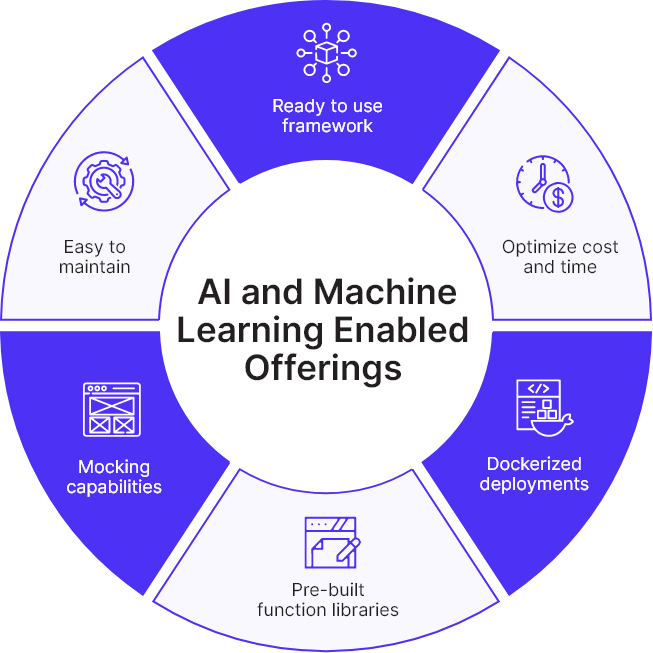



Unified Test Automation Framework developed by Qapitol, your one stop solution for every software testing challenge under the sun!

Parallel & distributed execution across browsers & devices
Built-in interceptor techniques & real time testing dashboard for UI testing
Efficient cloning and mocking capabilities for continuous feedback loop
Improved SLAs and IT ecosystem with self-healing capabilities
Scriptless framework that supports the execution of REST APIs along with the SOAP APIs
Streamlined creation & reusability of codes with the power of Gen AI and Machine Learning

Combine automation capabilities across UI, CI/CD, network, application and security layers
Experience the symphony of speed and simplicity with Gen AI-powered framework
Error Analysis
Put an end to exhaustive debugging! Harness GenAI's power for swift analysis of test case exceptions. Get insights, actionable solutions, and preventive best practices for future failures.
Locator Code
Reduce development time, supercharge your development processes by automating your locator code with GenAi through our framework.
Page Object Model
Effortlessly craft the foundational code of your page object model and streamline the creation of modular, reusable code while adhering to the design patterns and principles crucial for efficient testing.
Self-Healing
The framework’s auto-healing algorithm tackles failing locators on-the-go, slashing execution time, minimizing failures, and reducing debugging overhead.
Capabilities
- Offer a set of methods and actions for mobile interaction
- Enable the rapid configuration of tap and swipe actions via a JSON file
- Enable mobile-only testing sessions with automation methods
- Introduce network call interception for validating debug builds
- Offer cross-platform app launch capability for iOS and Android
Talk to Us


- WebActionListener class provides methods/actions to interact with the web browsers
- Web-specific methods like scrolling and context switching already exist
- Improve functionality, usability, security, and stability with CI/CD integration
- Maximize coverage and minimize test cycles
- Can be integrated with JIRA, Zephyr, TestRail & Azure Test plan
Talk to Us
- Test Automation across web, mobile, API, Desktop and Cloud
- Data pipeline automation
- Test Automation for AI Platforms
- Browser Stack, Sauce labs, On-Prem Device labs
- Run UI tests parallelly across multiple devices
Talk to Us


Device Lab Setup
- Setup device lab with Android & IOS devices
- Setup browser lab with Chrome, Firefox, Edge, Safari
- Control user or group access to devices and apps
- Install the system locally so that it is completely protected by your firewall
Talk to Us
No code? No problem!

What our clients say about our solutions

Qapitol took the ownership & accountability of things critical for the success of the project. The positivity and thought process that this team brings in to remove blockers is appreciated.
VP & CIO

The quality of resources has been outstanding. The way Qapitol QA collaborates with Swiggy with quick turnaround on urgent tasks is just magnificent and brilliance in itself.
AVP Engineering

An excellent partner with right automation experts. They understood the e-commerce domain, complex systems in SCM. They helped us to get to faster releases with 90% fewer bugs caused due to regression.
Sr. Director, Quality Engineering




